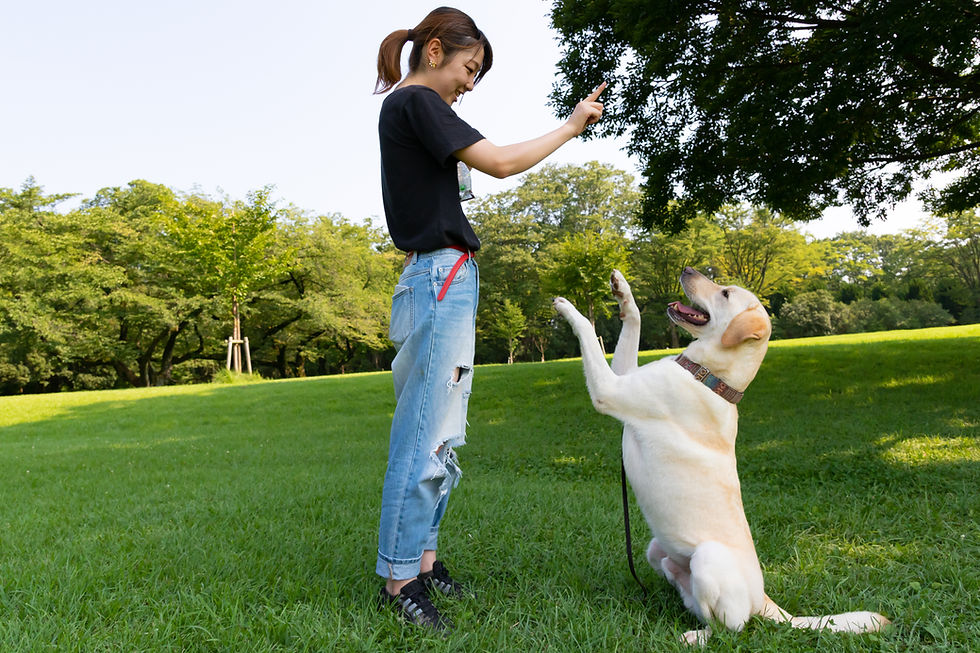How do I stop my dog from being so aggressive?
- Subhodip Unitel
- Sep 11, 2024
- 3 min read
Dealing with a dog that exhibits aggression can be challenging and stressful. Understanding how to manage and reduce dog aggressiveness is essential for ensuring a safe and harmonious environment for both your pet and your family. Here are some effective strategies to address and mitigate aggression in dogs.

1. Identify the Cause of Aggression
Understanding why your dog is aggressive is the first step in managing the behaviour. Aggression can stem from various sources such as fear, territoriality, or past trauma. Observing your dog's behaviour closely can help you identify triggers and patterns. Whether it's related to specific people, other animals, or particular situations, pinpointing the cause is crucial for effective intervention.
2. Implement Aggression Management in Dogs
Once you’ve identified the cause, you can start implementing strategies for aggression management in dogs. This might involve creating a structured environment where your dog feels secure and in control. Consistent routines and clear boundaries can help reduce anxiety and aggression.
3. Engage in Aggressive Dog Training
Aggressive dog training involves techniques and methods specifically designed to address and correct aggressive behaviour. This training often includes positive reinforcement, where good behaviour is rewarded. Techniques may involve desensitising your dog to triggers and gradually introducing them to situations where they previously showed aggression. Working with a professional dog trainer can provide tailored strategies and support.
4. Seek Professional Help from a Dog Behaviourist
When dealing with severe canine aggression, consulting a professional dog behaviourist can be highly beneficial. A Professional Dog Behaviourist has the expertise to assess and address complex behavioural issues. They can provide a comprehensive plan that includes behaviour modification techniques and training exercises tailored to your dog's specific needs.
5. Use Training for Aggressive Dogs
Training for aggressive dogs should be handled with care and patience. Positive reinforcement techniques can help build trust and encourage desirable behaviours. Avoid punitive measures, as these can escalate aggression. Focus on rewarding calm and non-aggressive responses to stimuli, gradually reducing your dog's aggressive reactions.
6. Establish Clear Rules and Boundaries
Setting clear rules and boundaries helps your dog understand acceptable behaviour. Consistency is key; ensure that everyone in the household applies the same rules and commands. This consistency helps reinforce the desired behaviour and prevents confusion.
7. Provide Proper Socialisation
Socialisation is vital for preventing and managing aggression. Expose your dog to different people, animals, and environments in a controlled manner. Positive experiences during socialisation can help reduce fear and aggression. Begin socialisation early and continue it throughout your dog’s life to ensure they remain well-adjusted.
8. Monitor and Manage Triggers
Identifying and managing triggers is essential for controlling aggression. If your dog reacts aggressively to specific stimuli, try to manage their exposure to these triggers. Gradually desensitise your dog to these triggers under controlled conditions, and reward them for calm behaviour.
9. Ensure Physical and Mental Stimulation
Boredom and lack of exercise can contribute to aggressive behaviour. Ensure your dog receives adequate physical exercise and mental stimulation. Engage in activities such as playtime, puzzle toys, and training sessions to keep your dog mentally and physically stimulated.
10. Maintain a Positive Relationship
Building a strong, positive relationship with your dog can aid in reducing aggression. Spend quality time with your dog, using positive reinforcement to strengthen your bond. A trusting relationship helps your dog feel more secure and less likely to react aggressively.
Conclusion
To address and reduce dog aggressiveness, it’s essential to identify the root cause, implement effective management strategies, and seek professional help if needed. By engaging in aggressive dog training, setting clear boundaries, and ensuring proper socialisation, you can create a more balanced and harmonious environment for your dog.
For expert guidance on managing canine aggression, consider reaching out to Pawsative Choices. Their expertise in aggression management and professional dog behaviourist services can help you effectively address and mitigate aggressive behaviours in your pet.



Коментарі